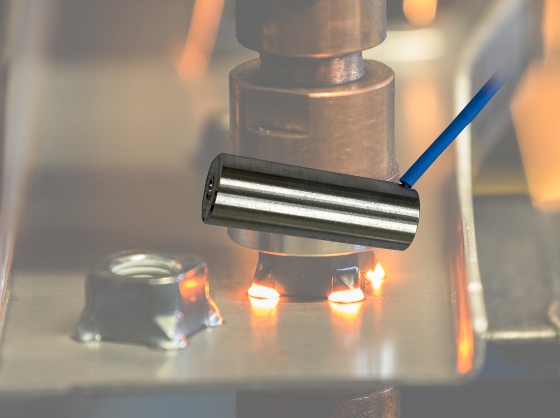 |
| August 22, 2023 | Volume 19 Issue 32 |
Designfax weekly eMagazine
Archives
Partners
Manufacturing Center
Product Spotlight
Modern Applications News
Metalworking Ideas For
Today's Job Shops
Tooling and Production
Strategies for large
metalworking plants
Detecting part errors: Automotive resistance welding machines

NewTek Sensor Solutions has designed a custom linear variable differential transformer (LVDT) position sensor for resistance spot welding machines used in automotive plants to detect missing or misaligned parts in nut and stud welding. Cars contain hundreds of welded nuts and studs that hold them together. Properly securing the right nut and stud to different car components is critical to safe operations.
Working in conjunction with the resistance weld control equipment, the NewTek custom LVDT detects and reports different conditions including: weld pin extended position, double part, misloaded part, incomplete weld, weld pin retraction, upside down nut, and wrong or missing part. Based on programmed system spec limits, the position sensor will trigger a go/no go response with each pass.
Designed to fit inside the weld body of the machine, the AC-operated LVDT sensor has a very high stroke length ratio and excellent repeatability that is critical to the application. Remote signal conditioning allows the LVDT to fit inside the small space while being resilient to high levels of shock. With extremely high measurement resolution of ~0.0009 in. (0.02 mm), the position sensor detects minute changes in process conditions.
As is fundamental with all LVDTs, the sensor has no contact between its core and coil structure, so parts do not rub together or wear. The result is a very long mechanical life. The linear variable differential transformer also has internal magnetic shielding that reduces effects of AC or DC fields.
NewTek possess the in-house engineering and domestic manufacturing capabilities to design and build customized AC- and DC-operated LVDT position sensors that may include radiation and submersion resistance, higher temperature exposures, ratiometric output, high stroke-to-length ratios, and specific electrical output requirements. Sensors can be constructed of ceramic and special core materials, with alloys such as Monel, Inconel, Hastelloy, and Titanium used in the sensor body.
Learn the basics of LVDTs at newteksensors.com/lvdt-tutorial/.
For more information, go to newteksensors.com/custom-lvdts/ or talk to Tutul Rahman, CEO at NewTek Sensor Solutions, at 856-406-6877. Tell him you saw it in Designfax.
Source: NewTek Sensor Solutions
Published August 2023
Rate this article
View our terms of use and privacy policy
